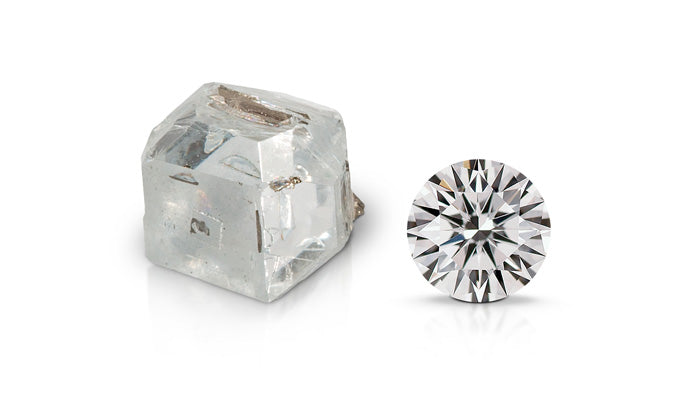Lab Grown Diamonds Guide

Sustainable and Stunning: Discovering the World of Lab Grown Diamonds
Welcome to the world of lab grown diamonds! We at Philippe Harold would like to offer some guidance about these incredible gems. What lab grown diamonds are, how they're made and why they offer a more efficient and sustainable option than their natural counterparts. If you're considering purchasing a diamond, understanding the benefits of lab grown diamonds may help you make an informed decision.
So what exactly is a lab grown diamond? Essentially, it's a diamond that has been created in a laboratory setting that mimics the natural process of diamond growth. Despite being visually, chemically and physically identical to natural diamonds, lab created diamonds can cost up to 60% less. Lab grown diamonds are also known as synthetic or artificial diamonds, as well as man-made, manufactured or cultured diamonds.
Lab grown diamonds typically take between one and two weeks to form and are growing in popularity with happy couples everywhere choosing them for their engagement rings.
Lab Grown Diamonds – Science Bit!
So how exactly are lab grown diamonds created? In essence, conditions similar to those found in the Earth's mantle are recreated in a laboratory setting.
There are two primary techniques used to make lab grown diamonds: HPHT (high pressure, high temperature) and CVD (chemical vapour deposition).
During the HPHT method, graphite (pure carbon) is subjected to intense heat and pressure using extreme electric pulses and pressed between metal pieces until it melts and forms a diamond - this typically takes several days.
On the other hand, CVD diamonds involve treating a tiny piece of existing diamond (usually produced via HPHT) with heated gas that is rich in carbon and can reach very high temperatures. The carbon gases ionise and eventually stick to the original diamond particle, leading to crystallisation.
Although CVD is faster than the HPHT process, it can create internal spots or graining resulting in lower quality. In comparison HPHT produced lab diamonds which rarely require post-growth treatment and offer exquisite gem-quality.
The Cost Breakdown
The cost of lab grown diamonds has significantly decreased in recent years with advancements in technology and techniques. Two factors contribute to this price difference: limited demand and uncertain resale value. While the popularity of lab created diamond rings is growing, it still pales in comparison to the demand for mined diamonds. Additionally, uncertainty surrounding the long-term resale value of lab grown diamonds can make some hesitant to invest in them. This lack of confidence keeps global prices for synthetic diamonds down, making them a more affordable option. However, as awareness about ethical sourcing continues to increase, so will the demand for lab grown diamonds.
